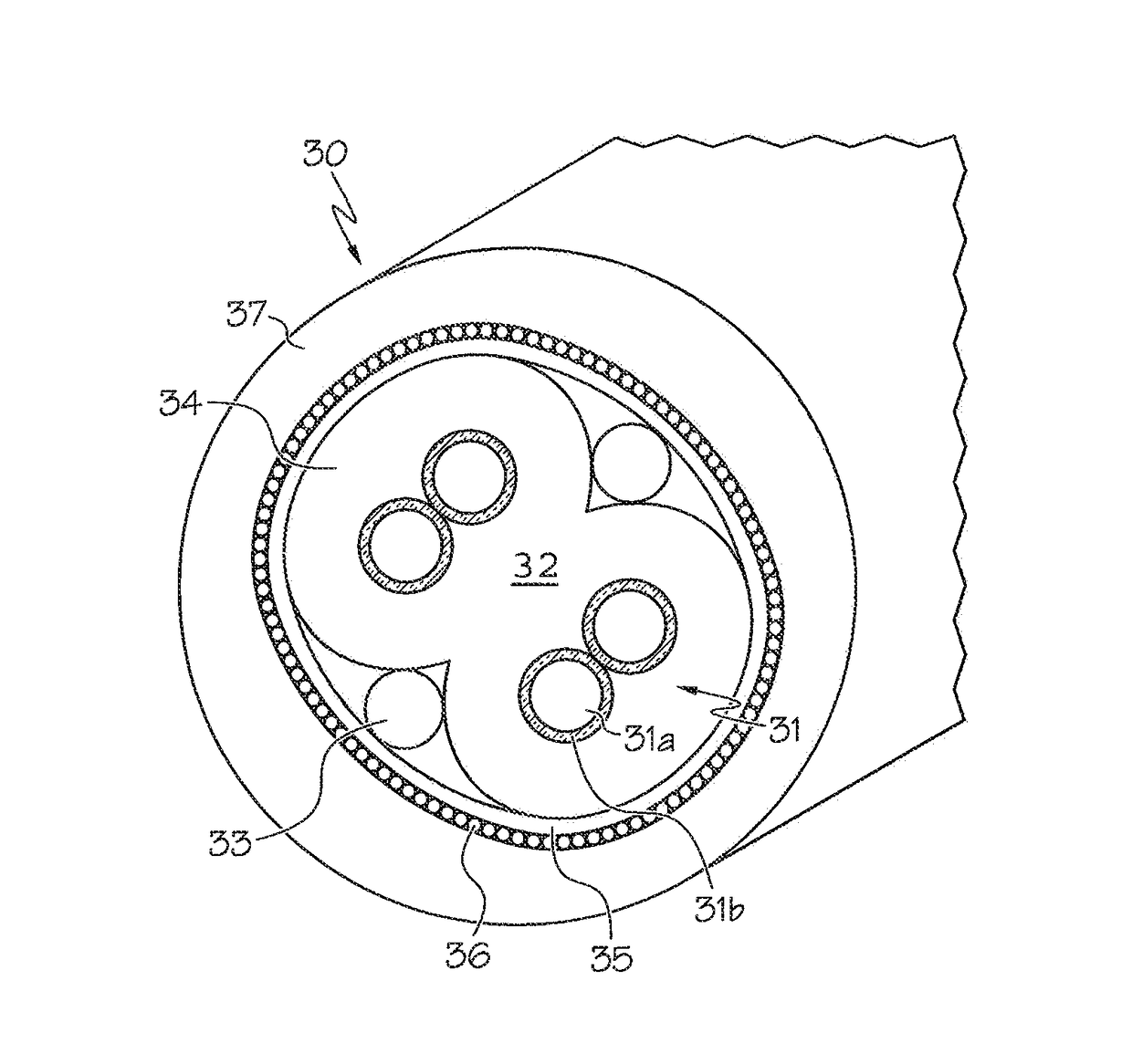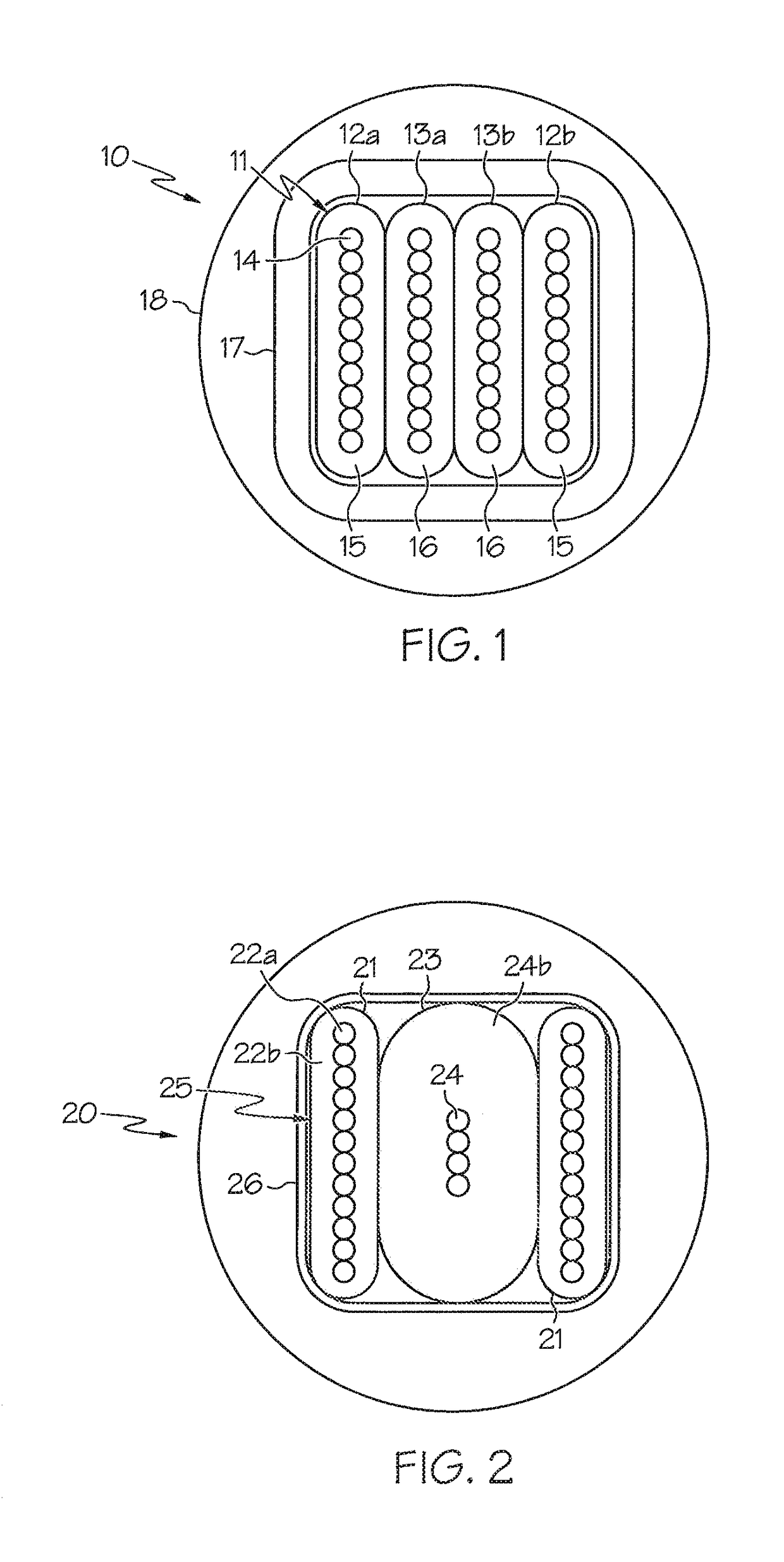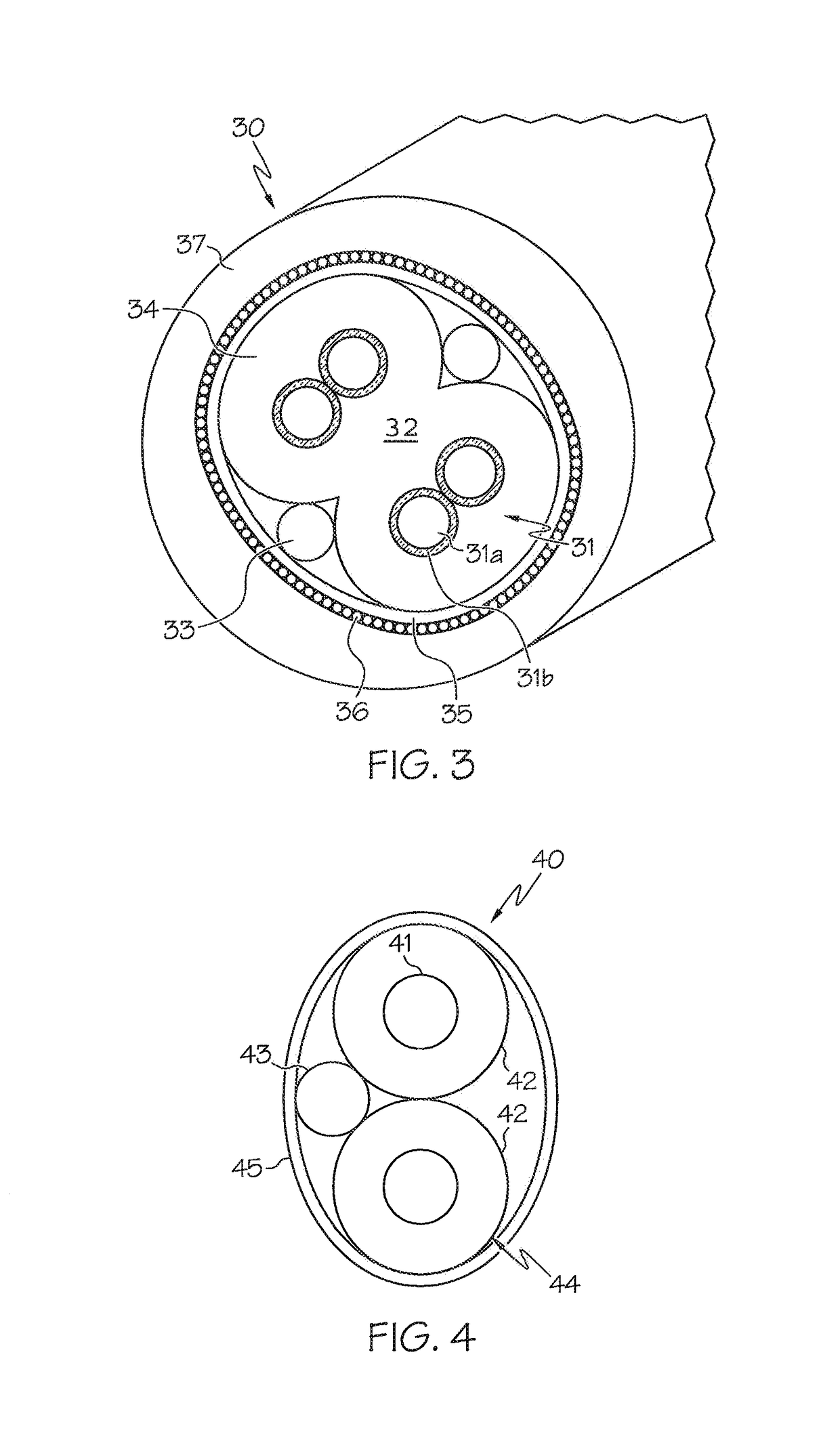High speed, low noise, low inductance transmission line cable
a transmission line and low noise technology, applied in the field of cables, can solve the problems of increasing frequency selective loss, none of the above-mentioned solutions have proven to be both highly effective and practical to implement in a wide range of applications, and its application is somewhat limited, so as to reduce signal attenuation, minimize noise generation, and increase mutual inductance
- Summary
- Abstract
- Description
- Claims
- Application Information
AI Technical Summary
Benefits of technology
Problems solved by technology
Method used
Image
Examples
Embodiment Construction
[0035]Transmission cables, built in accordance with the present invention, will now be described with initial reference to FIGS. 1-9. The conductor strands and wires in each of these descriptions are copper. In other embodiments, however, the conductor strands and wires may also consist of various grades and combinations of copper and silver.
[0036]Referring now to FIG. 1, the design of an inventive four (4) conductor transmission cable 10 is defined by four substantially flat conductors each consisting of ten (10) solid metallic strands laid side by side in direct contact in a flat parallel configuration within an extruded insulator. The four conductors are stacked together to form a rectangular profile 11. These conductors include shield conductors embodied by a first outer conductor 12a and a second outer conductor 12b, and signal conductors embodied by a first inner conductor 13a and a second inner conductor 13b. The first outer conductor 12a and the second outer conductor 12b ea...
PUM
| Property | Measurement | Unit |
|---|---|---|
| diameter | aaaaa | aaaaa |
| diameter | aaaaa | aaaaa |
| thickness | aaaaa | aaaaa |
Abstract
Description
Claims
Application Information
 Login to View More
Login to View More - R&D
- Intellectual Property
- Life Sciences
- Materials
- Tech Scout
- Unparalleled Data Quality
- Higher Quality Content
- 60% Fewer Hallucinations
Browse by: Latest US Patents, China's latest patents, Technical Efficacy Thesaurus, Application Domain, Technology Topic, Popular Technical Reports.
© 2025 PatSnap. All rights reserved.Legal|Privacy policy|Modern Slavery Act Transparency Statement|Sitemap|About US| Contact US: help@patsnap.com



